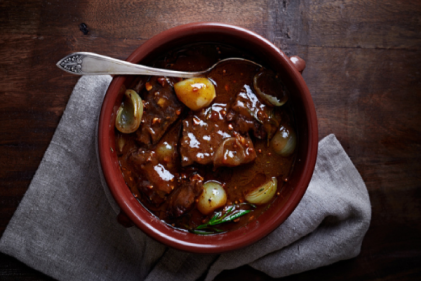Preschoolers are notorious for their changing and picky eating habits, when they can, quite randomly decide that they don’t like a particular texture, flavour, or even colour of food. They may even decide, between one day and the next, that they don’t like foods they used to love. While this may be frustrating or worrying to a parent, it is also perfectly normal, and shouldn’t be too much of a cause for worry.
Up until the age of four years, many children are simply afraid of new things – including new foods. So they tend to stick to the same few foods that they are used to, and know they like. The good news is that after four years old, this usually starts to taper off, and your child should start being open to new things.
Aside from fear of new things, this kind of fussiness can also be your child’s way of asserting him or her self. It could be that your child is making a silent statement: ‘You can’t make me eat what I don’t want to eat.’
Whatever the cause of the fussiness, there are a few ways you can help your preschooler to be open to new and different foods:
Offer a variety of foods at every meal. Include foods you know your child likes, as well as a few that he or she has not yet tried.
Avoid forcing the issue, by not putting new foods on your child’s plate. Simply place them on the table with everything else, and let your child decide.
Eat the foods yourself. Children love to mimic their parents, and that includes eating what they eat.
Make sure you serve child sized portions. A mountain of food can be daunting to a two year old, so keep them small. You can always offer your child a second portion if he or she wants it.
Don’t give your child too many options, or too great a say in what you serve. Instead of asking him or her what he or she wants, offer what you’ve made. Otherwise, you may find that you make macaroni and cheese every night of the week!
Children have much more sensitive palates than grown ups. So your child may reject something purely because of the texture. They also often associate foods with experiences, so if your child links something to an unpleasant experience, like being sick, then he or she may reject that food.
Get your child involved in food preparation. Helping to make the food you eat, or finding out where it comes from, can encourage a fussy eater to eat different foods.
Try not to lecture your child about food – you don’t want him or her to develop other problems with food. However, it’s a good idea to reinforce the idea that good nutrition makes you grow, and stay healthy.
Lastly, don’t give in to your child’s food demands too much. If he or she is still demanding things that you allowed when he or she was a toddler, then it’s time to explain that he or she is a big boy or girl, and that it’s expected that he or she eats big kid food.
Growth is not always linked to nutrition – especially in preschoolers. You may notice that your child is growing a lot, and hardly eating, or that your child eats a lot, and is not showing much sign of growth. Be assured that your child will eat when he or she is hungry, and that a growth spurt will happen sooner or later.
Let your child have some control over what he or she eats – just make sure that you offer healthy options. No child (unless they are sick) will not eat when he or she is hungry, and few won’t stop when they’re full, so worrying is really not that helpful.
Up until the age of four years, many children are simply afraid of new things – including new foods. So they tend to stick to the same few foods that they are used to, and know they like. The good news is that after four years old, this usually starts to taper off, and your child should start being open to new things.
Aside from fear of new things, this kind of fussiness can also be your child’s way of asserting him or her self. It could be that your child is making a silent statement: ‘You can’t make me eat what I don’t want to eat.’
Whatever the cause of the fussiness, there are a few ways you can help your preschooler to be open to new and different foods:
Offer a variety of foods at every meal. Include foods you know your child likes, as well as a few that he or she has not yet tried.
Avoid forcing the issue, by not putting new foods on your child’s plate. Simply place them on the table with everything else, and let your child decide.
Eat the foods yourself. Children love to mimic their parents, and that includes eating what they eat.
Make sure you serve child sized portions. A mountain of food can be daunting to a two year old, so keep them small. You can always offer your child a second portion if he or she wants it.
Don’t give your child too many options, or too great a say in what you serve. Instead of asking him or her what he or she wants, offer what you’ve made. Otherwise, you may find that you make macaroni and cheese every night of the week!
Children have much more sensitive palates than grown ups. So your child may reject something purely because of the texture. They also often associate foods with experiences, so if your child links something to an unpleasant experience, like being sick, then he or she may reject that food.
Get your child involved in food preparation. Helping to make the food you eat, or finding out where it comes from, can encourage a fussy eater to eat different foods.
Try not to lecture your child about food – you don’t want him or her to develop other problems with food. However, it’s a good idea to reinforce the idea that good nutrition makes you grow, and stay healthy.
Lastly, don’t give in to your child’s food demands too much. If he or she is still demanding things that you allowed when he or she was a toddler, then it’s time to explain that he or she is a big boy or girl, and that it’s expected that he or she eats big kid food.
Growth is not always linked to nutrition – especially in preschoolers. You may notice that your child is growing a lot, and hardly eating, or that your child eats a lot, and is not showing much sign of growth. Be assured that your child will eat when he or she is hungry, and that a growth spurt will happen sooner or later.
Let your child have some control over what he or she eats – just make sure that you offer healthy options. No child (unless they are sick) will not eat when he or she is hungry, and few won’t stop when they’re full, so worrying is really not that helpful.






